Quadrafire 27I-ACC Installation guide
- Category
- Stoves
- Type
- Installation guide
This manual is also suitable for

1 7044-225I August 13, 2018
3100-I ACC WOOD INSERT
AUTOMATIC COMBUSTION CONTROL
(ACC)
MODEL(S):
31I-ACC
Installation Manual
Installation & Appliance Set-Up
INSTALLER: Leave this manual with party responsible for use and operation.
OWNER: Retain this manual for future reference.
NOTICE: DO NOT DISCARD THIS MANUAL
Installation and service of this appliance should be performed by
qualified personnel. Hearth & Home Technologies recommends
HHT Factory Trained or NFI certified professionals.
If the information in these instructions is not
followed exactly, a re could result causing
property damage, personal injury, or death.
WARNING
• Do not store or use gasoline or other ammable
vapors and liquids in the vicinity of this or any other
appliance.
• Do not over re - If appliance or chimney connector
glows, you are over ring. Over ring will void your
warranty.
• Comply with all minimum clearances to combustibles
as specied. Failure to comply may cause house
re.
NOTE
To obtain a French translation of this manual, please contact
your dealer or visit www.quadrare.com
Pour obtenir une traduction française de ce manuel, s’il vous
plaît contacter votre revendeur ou visitez www.quadrare.com
WARNING
Fire Risk.
For use with solid wood fuel only.
Other fuels may over re and generate
poisonous gases (i.e. carbon monoxide).
HOT SURFACES!
Glass and other surfaces are hot during
operation AND cool down.
WARNING
Hot glass and appliance will cause burns.
• Do not touch glass until it is cooled
• Use leather gloves when reloading fuel
• NEVER allow children to touch glass
• Keep children away
• CAREFULLY SUPERVISE children in same room as
appliance.
• Alert children and adults to hazards of high
temperatures
• High temperatures may ignite clothing or other
ammable materials.
• Keep clothing, furniture, draperies and other
ammable materials away.

2 7044-225I August 13, 2018
3100 Insert ACC
1 Important Safety Information ............. 3
A. Insert Certication ...........................3
B. BTU & Efciency Specications ................3
C. Mobile Home Approved.......................4
D. Glass Specications .........................4
E. Non-Combustible Materials ....................4
F. Combustible Materials ........................4
G. Sleeping Room .............................4
H. California - Prop65 ..........................4
2 Getting Started .................................... 5
A. Design and Installation Considerations ...........5
B. Draft......................................5
C. Negative Pressure...........................6
D. Tools And Supplies Needed ...................6
E. Inspection of Appliance and Components .........6
F. Install Checklist .............................7
3 Dimensions and Clearances .............. 8
A. Appliance Dimensions ........................8
B. Clearances to Combustibles ...................9
C. Calculating Alternate Floor Protection...........10
4 Chimney Systems ............................. 11
A. Locating Your Appliance & Chimney ............11
B. Chimney Termination Requirements ............12
C. 2-10-3 Rule ..............................12
D. Venting Systems ...........................13
E. Inspections ...............................13
F. Chimney Height / Rise and Run................13
G. Securing Chimney Components ...............13
H. Larger Chimneys...........................13
I. Masonry Chimney...........................14
J. Metal Heat Circulating Masonry................15
K. Prefabricated Metal Chimney .................15
L. Ovalizing Round Stainless Steel Liners..........16
M. Altering The Fireplace.......................16
N. Zero-Clearance Fireplace ....................16
5 Appliance Set-Up .............................. 17
A. Outside Air Kit Installation ....................17
B. Disassemble Firebox & Outer Can .............18
C. Securing Stove Pipe/Liner to Flue Collar ........18
D. Optional Offset Adapter Installation.............18
E. Installing Outer Can & Leveling Bolts ...........19
F. Surround & Trim Kit Installation ................20
G. Installing Firebox into Outer Can ..............20
H. Securing Appliance to Stove Pipe/Liner .........21
I. Leveling Legs ..............................21
J. Snap Disc and Side Panel Installation ...........21
K. Blower Installation ..........................21
L. Blower Cord Installation on Left Side............22
M. Zero Clearance Adjustable Trim Support ........23
6 Mobile Home Installation .................. 24
7 Reference Materials .......................... 25
A. Service and Maintenance Log.................25
B. Accessories List............................27
TABLE OF CONTENTS
Safety Alert Key:
• DANGER! Indicates a hazardous situation which, if not avoided will result in death or serious injury.
• WARNING! Indicates a hazardous situation which, if not avoided may result in death or serious injury.
• CAUTION! Indicates a hazardous situation which, if not avoided, may result in minor or moderate injury.
• NOTICE: Indicates practices which may cause damage to the appliance or to property.
Quadra-Fire is a registered trademark of Hearth & Home Technologies.

August 13, 2018 7044-225I 3
3100 Insert ACC
Model: 3100-I (ACC) Insert
Laboratory: OMNI Test Laboratories, Inc.
Report No: 061-S-74-6.2
Type:
Solid Fuel Type, Listed Room
Heater
Standard:
UL1482 and ULC S628-93 and
(UM) 84-HUD, Mobile Home
Approved.
1 Important Safety Information
A. Insert Certication
NOTE: This installation must conform with local codes. In the absence of local codes you must comply with the UL1482,
(UM) 84-HUD and NPFA211 in the U.S.A. and the ULC S628-93 and CAN/CSA-B365 Installation Codes in
Canada.
B. BTU & Efciency Specications
EPA Certication #: 960-14
EPA Certied Emissions: 2.0 grams per hour
*LHV Tested Efciency: 78.3 %
**HHV Tested Efciency: 72.5 %
***EPA BTU Output: 11,500 to 31,800 / hr.
****Peak BTU/Hour
Output:
53,600
Vent Size: 6 inches
Firebox Size: 1.9 cubic feet
Recommended Wood
Length:
16 inches
Fuel Orientation: Side-to-Side
Fuel Seasoned Cord Wood
* Weighted average LHV efciency using Douglas Fir
dimensional lumber and data collected during EPA
emissions test.
**Weighted average HHV efciency using Douglas
Fir dimensional lumber and data collected during EPA
emissions test.
***A range of BTU outputs based on EPA Default
Efciency and the burn rates from the low and high EPA
tests, using Douglas Fir dimensional lumber.
****A peak BTU out of the unit calculated using the
maximum rst hour burn rate from the High EPA Test and
the BTU content of cord wood (8600) times the efciency.
The Quadra-Fire 3100 Wood Insert (ACC) meets the U.S. Environmental Protection Agency’s crib wood emission limits
for wood heaters sold after May 15, 2015.
This wood appliance needs periodic inspection and repair for proper operation. Consult the owner’s manual for further
information. It is against federal regulations to operate this wood heater in a manner inconsistent with the operating
instructions in the owner’s manual.
Approved for ZC reboxes.

4 7044-225I August 13, 2018
3100 Insert ACC
D. Glass Specications
This appliance is equipped with 5mm ceramic glass.
Replace glass only with 5mm ceramic glass. Please
contact your dealer for replacement glass.
C. Mobile Home Approved
G. Sleeping Room
H. California - Prop65
• This appliance is approved for mobile home
installations; when not installed in a sleeping room and
when an outside combustion air inlet is provided.
• The structural integrity of the mobile home oor, ceiling,
and walls must be maintained.
• The appliance must be properly grounded to the frame
of the mobile home with #8 copper ground wire.
• Outside Air Kit, part OAK-ACC must be installed in a
mobile home installation.
F. Combustible Materials
E. Non-Combustible Materials
Hearth & Home Technologies WILL NOT warranty
appliances that exhibit evidence of over-ring. Evidence of
over-ring includes, but is not limited to:
• Warped air tube
• Deteriorated refractory brick retainers
• Deteriorated bafe and other interior components
Improper installation, adjustment, alteration, service or
maintenance can cause injury or property damage.
For assistance or additional information, consult a qualied
installer, service agency or your dealer.
• Installation and use of any damaged appliance.
• Modication of the appliance.
• Installation other than as instructed by Hearth &
Home Technologies.
• Installation and/or use of any component part not
approved by Hearth & Home Technologies.
• Operating appliance without fully assembling all
components.
• Operating appliance without legs attached (if
supplied with appliance).
• Do NOT Over re - If appliance or chimney connector
glows, you are over ring.
Any such action that may cause a re hazard.
WARNING
Fire Risk.
Hearth & Home Technologies disclaims any
responsibility for, and the warranty will be voided
by, the following actions:
WARNING
This product and the fuels used to operate this product (wood), and
the products of combustion of such fuels, can expose you to
chemicals including carbon black, which is known to the State of
California to cause cancer, and carbon monoxide, which is known to
the State of California to cause birth defects or other reproductive
harm. For more information go to: WWW.P65Warnings.ca.gov
When installed in a sleeping room it is recommended that
a smoke and/or CO alarm be installed in the bedroom. The
size of the room must be at least 50ft³ per 1,000 Btu/hr
stove input, if the stove exceeds the room size, out air must
be installed.
NOTE: Hearth & Home Technologies, manufacturer
of this appliance, reserves the right to alter its
products, their specications and/or price without
notice.
Material which will not ignite and burn, composed of any
combination of the following:
- Steel
- Plaster
- Brick
- Iron
- Concrete
- Tile
- Glass
- Slate
Materials reported as passing ASTM E 136, Standard Test
Method for Behavior of Metals, in a Vertical Tube Furnace
of 750° C.
Material made of/or surfaced with any of the following
materials:
- Wood
- Compressed Paper
- Plant Fibers
- Plastic
- Plywood/OSB
- Sheet Rock (drywall)
Any material that can ignite and burn: ame proofed or not,
plastered or non-plastered.

August 13, 2018 7044-225I 5
3100 Insert ACC
Install Guide
2 Getting Started
A. Design and Installation Considerations
Before installing, determine the following:
• Type of chimney connector to be used
- Single wall, 6 inch (152mm) diameter, stainless
steel, or
- Double wall, 6 inch (152mm) diameter, stainless
steel
• Consult page 28 for clearances to combustibles
• Power outlet located close by for optional blower
Draft is the pressure difference needed to vent appliances
successfully. When a appliance is drafting successfully, all
combustion byproducts are exiting the home through the
chimney.
Considerations for successful draft include:
• Preventing negative pressure
• Location of appliance and chimney
To be sure that your appliance burns properly:
• During a low burn, the chimney draft (static pressure)
should be approximately -.04 inch water column (W.C.)
• During a high burn the chimney draft should be
approximately -.10 inch (W.C.)
• Measure the W.C at 6 inches (152mm) above the top
of the appliance after one hour of operation at each
burn setting.
B. Draft
Check building codes prior to installation.
• Installation MUST comply with local, regional, state
and national codes and regulations.
• Consult insurance carrier, local building, re ofcials
or authorities having jurisdiction about restrictions,
installation inspection, and permits.
CAUTION
WARNING
Asphyxiation Risk.
• Do NOT connect this appliance to a
chimney ue servicing another appliance.
• Do NOT connect to any air distribution duct
or system.
May allow ue gases to enter the house.
NOTICE: Hearth & Home Technologies assumes no
responsibility for the improper performance of
the appliance system caused by:
• Inadequate draft due to environmental conditions
• Down drafts
• Tight sealing construction of the structure
• Mechanical exhausting devices
• Over drafting caused by excessive chimney heights
• Ideal performance is with height of chimney between
14-16 feet (4.26-4.88m) measured from the base of
the appliance.

6 7044-225I August 13, 2018
3100 Insert ACC
WARNING
Fire Risk.
Hearth & Home Technologies disclaims any
responsibility for, and the warranty will be voided
by, the following actions:
• Installation and use of any damaged appliance.
• Modication of the appliance.
• Installation other than as instructed by Hearth &
Home Technologies.
• Installation and/or use of any component part not
approved by Hearth & Home Technologies.
• Operating appliance without fully assembling all
components.
• Operating appliance without legs attached (if supplied
with appliance).
• Do NOT Over re - If appliance or chimney connector
glows, you are over ring.
Any such action that may cause a re hazard.
D. Tools And Supplies Needed
Before beginning the installation be sure the following tools
and building supplies are available:
Reciprocating saw
Framing material
Pliers
High temp caulking material
Hammer
Gloves
Phillips screwdriver
Framing square
• Remove appliance and components from packaging
and inspect for damage.
• Report to your dealer any parts damaged in shipment.
• Read all the instructions before starting the
installation. Follow these instructions carefully
during the installation to ensure maximum safety
and benet.
E. Inspection of Appliance and Components
Flat blade screwdriver
Electric drill and bits
Plumb line
Safety glasses
Level
Tape measure
Misc. screws and nails
7/16 socket or wrench
1/2-3/4 in. length, #6 or #8 self-drilling screws
Fire Risk.
Inspect appliance and components for damage.
Damaged parts may impair safe operation.
• Do NOT install damaged components.
• Do NOT install incomplete components.
• Do NOT install substitute components.
Report damaged parts to dealer.
WARNING
C. Negative Pressure
Negative pressure results from the imbalance of air
available for the appliance to operate properly. It can be
strongest in lower levels of the house.
Causes include:
• Exhaust fans (kitchen, bath, etc.)
• Range hoods
• Combustion air requirements for furnaces, water
appliances and other combustion appliances
• Clothes dryers
• Location of return-air vents to furnace or air
conditioning
• Imbalances of the HVAC air handling system
• Upper level air leaks such as:
- Recessed lighting
- Attic hatch
- Duct leaks
To minimize the effects of negative air pressure:
• Install optional outside air kit with the intake facing
prevailing winds during the heating season
• Ensure adequate outdoor air for all combustion
appliances and exhaust equipment
• Ensure furnace and air conditioning return vents are
not located in the immediate vicinity of the appliance
• Avoid installing the appliance near doors, walkways or
small isolated spaces
• Recessed lighting should be a “sealed can” design
• Attic hatches weather stripped or sealed
• Attic mounted duct work and air handler joints and
seams taped or sealed
• Basement installations should be avoided
WARNING
Asphyxiation Risk.
• Negative pressure can cause spillage
of combustion fumes, soot and carbon
monoxide.
• Appliance needs to draft properly for
safety.

August 13, 2018 7044-225I 7
3100 Insert ACC
F. Install Checklist
ATTENTION INSTALLER:
Follow this Standard Work Checklist
This standard work checklist is to be used by the installer in conjuction with, not istead of, the instructions contained in this installation manual.
Customer:
Date Installe:
Lot / Address:
Location of Appliance:
Installer:
Dealer / Distributor Phone #:
Serial #:
Model:
WARNING! Risk of Fire or Exposion!
Failure to install appliance according to these instruction can lead to a fire or explosion.
Appliance Install
Verified clearances to combustibles.
Appliance is leveled and connector is secured to appliance.
Hearth extension size/height decided.
Outside air kit installed.
Floor protection requirements have been met.
If appliance is connected to a masonry chimney, it should be cleaned and
inspected by a professional. If installed to a factory built metal chimney, the
chimney must be installed according to the manufacturer’s instructions and
clearances.
Chimney
Chimney configuration complies with diagrams.
Chimney installed, locked and secured in place with proper clearance.
Chimney meets recommended height requirements (14-16 feet).
Roof flashing installed and sealed.
Terminations installed and sealed.
Clearances
Combustible materials not installed in non-combustible areas.
Verified all clearances meet installation manual requirements.
Mantels and wall projections comply with installation manual requirements.
Protective hearth strips and hearth extension installed per manual requirements.
Appliance Setup
All packaging and protective materials removed.
Firebrick, baffle and ceramic blanket installed correctly.
All labels have been removed from the door.
All packaging materials are removed from inside/under the appliance.
Manual bag and all of its contents are removed from inside/under the appliance
and given to the party responsible for use and operation.
Hearth & Home Technologies recommends the following:
• Photographing the installation and copying this checklist for your file.
• That this checklist remain visible at all times on the appliance until the installtion is complete.
Comments: Further description of the issues, who is responsible (Installer/Builder/Other Trades, etc.) and corrective action needed:
Comments communicated to party responsible ____________________________ by _____________________ on ___________
(Builder / Gen. Contractor) (Installer) (Date)
_________________________________________________________________________________
______________________________________________________________________________
______________________________________________________________________________
________________________________________________________________________
___________________________________________________________________________________
___________________________________________________________________
___________________________________________________________________________________
____________________________________________________________________________________
YES IF NO, WHY?
______________________________________
______________________________________
______________________________________
______________________________________
______________________________________
______________________________________
______________________________________
______________________________________
______________________________________
______________________________________
______________________________________
______________________________________
______________________________________
______________________________________
______________________________________
______________________________________
______________________________________
______________________________________
______________________________________
______________________________________

8 7044-225I August 13, 2018
3100 Insert ACC
Figure 8.1 Top View with Steel Surround
28-5/8” [727]
23-7/8” [606]
14-1/4”
[362]
12-1/2”
[318]
25-3/4”
[654]
24-1/4”
[616]
12” [305]
6”
[152]
21-1/2”
[546]
22-1/2”
[572]
8-1/2” [216]
20-1/2”
[521]
4-1/4” [108]
11”
[279]
15-1/8” [384]
43” [1092]
31”
[787]
Figure 8.3 Side View with Steel Surround
Figure 8.4 Front View with Large Steel Surround (SP-31IACC-
LRG and TRIMKIT-5134)
Figure 8.2 Front View will Small Steel Surround (SP-31IACC-
STD and TRIMKIT-4331)
51” [1295]
34”
[864]
Figure 8.5 Side View with Steel Surround and Optional Offset
Adapter (OFFSET-ADAPT)
3 Dimensions and Clearances
A. Appliance Dimensions
NOTE: Flue Collar size is 6 inch (152mm) diameter (ID)

August 13, 2018 7044-225I 9
3100 Insert ACC
In Canada a full length 6 inch (152mm) S635 ue liner required as per ULC S628.
In USA a minimum 5 ft length (1.82m), 6 inch (152mm) diameter ue liner is required as per UL 1482.
SIDE TRIM
SIDE WALL
TOP TRIM
27-1/4 in
(692mm)
32-1/4 in
(819mm)
HEARTH
EXTENSION
USA 16-3/4 in (171mm)
CANADA
24-3/4 in (629mm)
40-11/16 in
(1033mm)
FIREPLACE FRONT SURFACE
USA 23-1/2
CANADA 25-1/2 (648mm)
HEARTH EXTENSION
51 7/16
1306mm
12in max
MANTEL
See next page for thermal protection
calculations
Optional
Mantel
Deflector
FIREPLACE FRONT SURFACE
USA 23-1/2
CANADA 25-1/2 (648mm)
HEARTH EXTENSION
41 7/16
1052mm
12in max
MANTEL
See next page for thermal protection
calculations
Without Mantel Deector With Mantel Deector
B. Clearances to Combustibles
United States and Canada (UL and ULC)
C
D
A
B
Minimum Opening Dimensions Inches Millimeters
A Height
22-3/4 578
B Front Width
28-7/8 733
C Back Width
24-1/8 613
D Depth
14-1/2 368
NOTE: Minimum opening dimensions include a 1/4”
(6mm) clearance around unit.
NOTE: If trim measurement is over 3/4 in (19mm)
in depth use mantle or side clearances to
combustibles.
NOTE: Clearances may only be reduced by means
approved by the regulatory authority having
jurisdiction
Fire Risk.
• Comply with all minimum clearances to
combustibles as specied.
• Failure to comply may cause house re.
WARNING

10 7044-225I August 13, 2018
3100 Insert ACC
C. Calculating Alternate Floor Protection
Material
Thermal Resistance: R value
The R value is a measure of a material’s resistance to heat
transfer.
R value is convenient when more than one material is used
since you can add the R values together, whereas you can
not do this for k value.
The HIGHER the R factor means less heat is being
conducted through the non-combustible material to the
combustible material beneath it.
The R value of a material must be equal or larger then the
required R value to be acceptable.
Figure 10.2
ZERO
CLEARANCE
ONLY
Required
Thermal
Protection
Adj. Hearth
Support
R= 3.06
0 to 6-1/2 inch
(0 to 165mm)
ZERO
CLEARANCE
ONLY
Required
Thermal
Protection
R= 2.04
Adj. Hearth
Support
6-1/2 inch
(165mm
)
Figure 10.1
Zero Clearance Floor Thermal Protection
THERMAL
PROTECTION
USA
& CANADA
Floor height 0” to 6-1/2” (6mm to 165mm)
below insert base
R=3.06
Floor height greater than 6-1/2” (165mm)
below insert base
R= 2.04

August 13, 2018 7044-225I 11
3100 Insert ACC
Recommended
Location
Marginal
Location
Location
Not
Recommended
Recommended
Location
Location NOT
Recommended
Multi-level Roofs
Windward
Leeward
Outside Air Kit Termination Cap
Figure 11.1
A. Locating Your Appliance & Chimney
Location of the appliance and chimney will affect
performance. As shown in Figure 11.1 the chimney should:
• Install through the warm space enclosed by the building
envelope. This helps to produce more draft, especially
during lighting and die down of the re.
• Penetrate the highest part of the roof. This minimizes
the affects of wind turbulence and down drafts.
• Consider the appliance location in order to avoid oor
and ceiling attic joists and rafters.
• Locate termination cap away from trees, adjacent
structures, uneven roof lines and other obstructions.
Your local dealer is the expert in your geographic area and
can usually make suggestions or discover solutions that will
easily correct your ue problem.
4 Chimney Systems

12 7044-225I August 13, 2018
3100 Insert ACC
3 ft (91 cm)
Minimum
Less than 10 ft (305 cm)
2 ft (61 cm)
3 ft (91 cm)
Minimum
10 ft (305 cm) To Nearest Roofline
2 ft (61 cm)
Pitched Roof
Figure 12.1
Figure 12.2
10 ft. (305cm) or more
3 ft. (91cm) Minimum
Less than 10 ft. (305cm)
2 ft. (61cm) Minimum
3 ft. (91cm) Minimum
Wall or Parapet
Flat Roof
C. 2-10-3 Rule
These are safety requirements and are not meant to
assure proper ue draft.
This appliance is made with a 6 inch (152mm) diameter
chimney connector as the ue collar on the appliance.
• Changing the diameter of the chimney can affect draft
and cause poor performance.
• It is not recommended to use offsets and elbows at
altitudes above 4000 feet above sea level and or when
there are other factors that affect ue draft.
B. Chimney Termination Requirements
Follow manufacturer’s instructions for clearance,
securing ashing and terminating the chimney (Figure
12.1 & 12.2).
• Must have an approved and Listed cap
• Must not be located where it will become plugged by
snow or other material
• Must terminate at least 3 feet (91cm) above the roof
and at least 2 feet (61cm) above any portion of the roof
within 10 feet (305cm).
• Must be located away from trees or other structures
NOTICE:
• Chimney performance may vary.
• Trees, buildings, roof lines and wind conditions affect
performance.
• Chimney height may need adjustment if smoking or
overdraft occurs.
NOTICE: Locating the appliance in a basement or in a
location of considerable air movement can cause
intermittent smoke spillage from appliance. Do
not locate appliance near:
• Frequently open doors
• Central heat outlets or returns

August 13, 2018 7044-225I 13
3100 Insert ACC
D. Venting Systems
Chimney Connector:
It is also known as ue pipe or stove pipe. It must be
6 inches (152mm) minimum diameter stainless steel
connector pipe.
Chimney:
The chimney can be new or existing, masonry or
prefabricated and must meet the following minimum
requirements as specied below.
E. Inspections
Existing chimneys should be inspected and cleaned by a
qualied professional prior to installation. The chimney
must not have cracks, loose mortar or other signs of
deterioration and blockage. Hearth & Home recommends
a NFI or CSIA certied professional or a technician, under
the direction of a certied professional, conduct a Level II
inspection per NFPA 211.
NOTICE: Check with your local building authorities
and/or consult the National Fire Protection
Association (NFPA 211).
H. Larger Chimneys
It is recommended that chimneys with larger diameters
than 6 inches (152mm) be relined. An oversized ue can
affect draft and impair performance and will allow increased
build-up of creosote.
F. Chimney Height / Rise and Run
This product was designed for and tested on a 6 inch
(152mm) chimney, 14 to 16 feet (420-480cm) high,
(includes appliance height) measured from the base of the
appliance. The further your stack height or diameter varies
from this conguration, the greater the likelihood it may
affect performance.
Chimney height may need to be increased by 2 - 3% per
each 1000 feet above sea level. It is not recommended to
use offsets or elbows at altitudes above 4000 feet above
sea level or when there are other factors that affect ue
draft.
Improper installation, adjustment, alteration, service or
maintenance can cause injury or property damage. Refer
to the owner’s information manual provided with this
appliance. For assistance or additional information consult
a qualied installer, service agency or your dealer.
WARNING
WARNING
Asphyxiation Risk.
• DO NOT CONNECT THIS Appliance TO A
CHIMNEY FLUE SERVICING ANOTHER
APPLIANCE.
• DO NOT CONNECT TO ANY AIR
DISTRIBUTION DUCT OR SYSTEM.
May allow ue gases to enter the house.
Fire Risk.
Inspection of Chimney:
• Chimney must be in good condition.
• Meets minimum standard of NFPA 211
• Factory-built chimney must be 6 inch
(152mm) UL103 HT.
WARNING
Fire Risk.
Follow venting manufacturer’s clearances and
instructions when installing venting system
WARNING
LINER CONNECTOR
FLUE
GAS
DIRECTION
CRIMPED
END
TOWARDS
STOVE
Figure 13.1
G. Securing Chimney Components
All joints should be secured with 3 sheet metal screws or
rivets per pipe manufacturers instructions. The sections
must be attached to the insert and to each other with the
crimped (male) end pointing toward the insert (Figure
13.1).
WARNING
Fire Risk.
Follow venting manufacturer’s clearances and
instructions when installing venting system.

14 7044-225I August 13, 2018
3100 Insert ACC
• Must meet minimum standards of NFPA 211.
• Must have at least 5/8 inch (16mm) re clay lining
joined with refractory cement. (Installations into a clay
ue without a stainless steel liner may reduce draw
which affects performance, will cause the glass to
darken and produce excessive creosote).
• The masonry wall of the chimney, if brick or modular
block, must be a minimum of 4 inches (102mm)
nominal thickness.
• A chimney of rubble stone must be at least 12 inches
(305mm) thick.
• Cross-sectional area shall conform to NFPA 211-2006
Section 12.4.5.1.
• Should be lined with a 6 inch (152mm) stainless steel
ue liner to improve performance and reduce creosote
build-up.
I. Masonry Chimney
UL 1777 Insulated Stainless Steel
Liner or Other Approved Lining System
Follow Manufacturer’s Instructions
on Insulation and Support
For Zero or Other Non-Code Clearances,
Follow Approved Liner Manufacturer’s Specific
Insulation Requirements: Different Clearances
May Require Different Specifications
Masonry Chimney Must
Have Structural Integrity
UL 1777 Insulated Stainless Steel
Liner or Other Approved Lining System
Minimum 8 in. (203mm) Masonry
Thickness in Front of Smoke Chamber
Damper Plate Removed or
Fastened in Open Position
Seal with Non-Combustible Material
Minimum Clearance in Accordance
with Insert Listing
Floor Protection in
Accordance with Insert
Listing
Follow Manufacturer’s
Instructions for Maximum
Liner Extension Above
Chimney
Maximum 30
Degrees
Offset in Chimney
Combustible Floor
Figure 14.1
NOTE: In Canada, this replace insert must be installed
with a continuous chimney liner of a 6 inch
(152mm) diameter extending from the replace
insert to the top of the chimney. The chimney
liner must conform to the Class 3 requirements
of CAN/ULC-S635, Standard for Lining Systems
for Existing Masonry or Factory-Built Chimneys
and Vents, or CAN/ULC-S640, Standard for
Lining Systems for New Masonry Chimneys.
Generic Insert Model Shown in Illustration
This insert conforms with the UL 1482 and ULC S628
(Canada) in all respects, and is approved to UL &
ULC safety standards for installation and use within
a replace with a masonry chimney in accordance with
NFPA 211 and CAN/CSA-B365-01.
• An equivalent liner must be a listed chimney liner
system or other approved material.
• No dilution air is allowed to enter the chimney.
a. Secure the replace damper in the open position.
If this cannot be accomplished, it will be necessary
to remove the damper.
b. Seal damper area of chimney around chimney
connector with a high temperature sealant or seal
insert against the face of the replace.
c. Both methods must be removable and replaceable
for cleaning and re-installation.
• When possible, install an airtight clean-out door to the
rear of the smoke shelf.

August 13, 2018 7044-225I 15
3100 Insert ACC
K. Prefabricated Metal Chimney
Figure 15 .1
J. Metal Heat Circulating Masonry
The chimney can be new or existing, masonry or
prefabricated and must meet the following minimum
requirements:
• Must be minimum 6 inch (152mm) inside diameter of
high temperature chimney listed to UL 103 HT (2100
o
F)
or ULC S628.
• Must use components required by the manufacturer for
installation.
• Must maintain clearances required by the manufacturer
for installation.
• Refer to manufacturers instructions for installation
• This insert is listed to UL 1482 Standard and is
approved for installation into listed factory-built zero
clearance replaces listed to UL 127 conforming to the
following specications and instructions:
• The original factory-built clearance replace chimney
cap must be re-installed after installing the approved
chimney liner meeting type UL 103 HT requirements
(2100°F) per UL 1777.
• If the chimney is not listed as meeting HT requirements,
or if the factory built replace was tested prior to 1998,
a full height listed chimney liner must be installed from
the appliance ue collar to the chimney top.
• The liner must be securely attached to the insert ue
collar and the chimney top.
• The air ow of the factory-built zero-clearance replace
system must not be altered. The ue liner top support
attachment must not reduce the air ow for the existing
air-cooled chimney system.
Minimum 8” (203mm) Masonry Thickness
in Front of Smoke Chamber
Damper Plate Removed or
Fastened in Open Position
Seal with Non-
Combustible Material
Minimum Clearance in Accordance with
Insert Listing
Floor Protection in
Accordance with Insert
Listing
Combustible Floor
Airtight Insulated Clean-Out
Stainless Steel Chimney Connector
Must Extend to Flue Liner
Flue Liner with Required Air Space
This insert conforms with the safety standard UL-1482 and
ULC S628 (Canada) in all respects and is approved to UL
and ULC safety standards for installation and use within a
replace with masonry chimney, in accordance with NFPA
211, with a direct ue collar connection.
Generic Insert Model Shown in Illustration
• No dilution air is allowed to enter the chimney.
a. Secure the replace damper in the open position.
If this cannot be accomplished, it will be necessary
to remove the damper
b. Seal damper area of chimney around chimney
connector with a high temperature sealant or seal
insert against the face of the replace.
c. Both methods must be removable and replaceable
for cleaning and re-installation.
NOTICE: In Canada when using a factory-built chimney
it must be safety listed, Type UL103 HT
(2100oF) [1149oC] CLASS “A” or conforming
to CAN/ULC-S629M, STANDARD FOR 650oC
FACTORY-BUILT CHIMNEYS.
NOTE: Refer to chimney liner manufacturer for
recommendations on supporting the liner.
Installation into replaces without a permit will void
the listing.
Minimum Opening
Dimensions
Inches Millimeters
A Height 22 559
B Front Width 29-5/8 752
C Back Width 24-7/8 632
D Depth 14-3/4 375
Fire Risk.
When lining air-cooled factory-built chimneys:
• Run chimney liner approved to UL 1777 Type HT
requirements (2100 degrees F)
• Re-install original factory built chimney cap ONLY
• DO NOT block cooling air openings in chimney
• Blocking cooling air will overheat the chimney
WARNING

16 7044-225I August 13, 2018
3100 Insert ACC
The following modications of factory-built replaces are
permissible:
• The replace must not be altered. Cutting any sheet
metal parts of the replace in which the replace insert
is to be installed is prohibited per ANSI Z21.88 except
that the damper may be removed to accommodate a
direct-connect starter pipe or chimney liner,
• External trim pieces which do not affect the operation
of the replace may be removed providing they can be
stored on or within the replace for reassembly if the
insert is removed.
• The permanent metal warning label provided in the
component pack must be attached to the back of the
replace, with screws or nails, stating that the replace
may have been altered to accommodate the insert,
and must be returned to original condition for use as a
conventional replace (Figure 15.2).
• If the hearth extension is lower than the replace
opening, the portion of the insert extending onto the
hearth must be supported.
• Manufacturer designed adjustable support kit can be
ordered from your dealer.
• Final approval of this installation type is contingent
upon the authority having jurisdiction.
M. Altering The Fireplace
250-2061
WARNING
THIS FIREPLACE MAY HAVE BEEN ALTERED
TO ACCOMMODATE AN INSERT. IT MUST BE
RETURNED TO ITS ORIGINAL CONDITION
BEFORE USE AS A SOLID FUEL BURNING
FIREPLACE.
250-2061
Heath & Home Technologies
250-2061
5.5 in. width x 2 in. height
NON. ANOD. ALUM BLACK LETTERS ON SILVER
with 1/8 in. holes on both sides.
Black letters
Figure 15.2
Ovalizing round stainless steel liners to accommodate the
liner passing through the damper region of a replace is an
allowable and acceptable practice.
Ensure that the ovalization is minimized to the extent
required to t through the damper.
L. Ovalizing Round Stainless Steel Liners N. Zero-Clearance Fireplace
A permit may be required for installations, nal approval is
contingent of the authority having local jurisdiction. Consult
insurance carrier, local building, re ofcials or authorities
having jurisdiction about restrictions, installation inspection,
and permits.
Inspect the existing replace and chimney for any damage
or aws such as burnouts, metal or refectory warping.
Inspection to a minimum of NFPA 211 Level II is
recommended. All repairs must be made prior to installing
an insert. The replace must be structurally sound and be
able to support the weight of the solid-fuel insert
The factory-built chimney must be listed per UL 127 or
ULC 610-M87 for all installations. Install thermal protection
per this appliance listing requirements.
A full height 6 inch diameter stainless steel full height
listed chimney liner must be installed meeting type HT
(2100°F) requirements per UL 1777 (USA) or ULC S635
with “0” clearance to masonry (Canada). The full liner must
be attached to the insert ue collar and to the top of the
existing chimney.
The ue liner top support attachment must not reduce the
air ow for the existing air-cooled chimney system. Re-
install original factory-built chimney cap only; see section
on Prefabricated Metal Chimney on page 15.
To prevent room air passage to the chimney cavity of the
replace, seal either the damper area around the chimney
liner or the insert surround. Circulating air chamber (i.e. in a
steel replace liner or metal hearth circulatory) may not be
blocked. The air ow within and around the replace shall
not be altered, blocked by the installation of the insert. (i.e.
no louvers or cooling air inlet or outlet ports may be blocked
by the insert or the insert surround.
See Altering the Fireplace on page 16 for modications
allowed for factory-built replaces.
The following parts may be removed:
Damper Smoke Shelf or Bafe
Ember Catches Fire Grate
Viewing Screen/Curtain Doors
Asphyxiation Risk.
DO NOT connect this appliance to a chimney
ue servicing another appliance or to any air
distribution duct or system.
This may allow ue gases to enter the house.
WARNING

August 13, 2018 7044-225I 17
3100 Insert ACC
5 Appliance Set-Up
A. Outside Air Kit Installation
A source of air (oxygen) is necessary in order for
combustion to take place. Whatever combustion air is
consumed by the re must be replaced. Air is replaced via
air leakage around windows and under doors. In homes
that have tightly sealed doors and windows, an outside air
source is needed. An optional Outside Air Kit is available.
Items Needed for Installation (not supplied)
• 4 inch ex aluminum pipe, or if using alternate material,
then it shall be made from durable, non-combustible,
heat resistant material up to 350°F. Cut the pipe to the
required length for your installation.
• Phillips head screw driver
• 5/32 Allen Wrench
• Silicone sealant
Option One - Installation Instructions
1. Remove the outside air cover plate from the outer
can of the appliance and discard (Figures 17.1).
2. Install ex adapter to outer can.
The outside air cover plate comes packaged with the
component pack of your appliance. It is necessary to
remove the blower housing and block off the room air with
the outside air cover.
NOTE: Do not use plastic wire ties that come with the
kit as they will melt. You may need to install
the ex pipe into the rebox rst depending on
installation. Attach ex to adapter with at least 2
screws.
3. Ensure existing access hole in replace is sufcient to
feed the 4 inch ex.
4. After sliding can into replace, feed ex into cut
opening to obtain outside combustion air.
5. Level outer can and install appliance.
6. Remove 4 bolts from both sides of the blower housing
and remove the housing.
7. Remove 2 Phillips head screws from housing and save.
8. See instructions that come with your blower kit to
attach rectangular outside air cover (Figure 17.1).
Option Two - Installation Instructions
1. Remove the outside air cover plate from the outer can
of the appliance and discard (Figures 17.1).
NOTE: Ensure existing access hole in replace with not
be covered by the outer can. Existing outside
air intake hole may be under at the rear of side
of outer can. Outside air may also enter down
existing chimney.
2. Level outer can and install appliance.
3. Remove 4 bolts from both sides of the blower housing
and remove the housing.
4. Remove 2 Phillips head screws from housing and save.
5. After installing the appliance in the outer can, seal the
appliance opening and trim package with insulation to
prevent air leakage into the room.
Figure 17.1
Outside Air
Cover Plate
(Discard)
Termination
Cap
Flex
Adapter
Rectangular
Outside Air
Cover
(included
SDPNL-31I-BK or
SDPNL-31I-NL)
Fire Risk.
Asphyxiation Risk.
Do not draw outside combustion air from:
• Wall, oor or ceiling cavity
• Enclosed space such as an attic or garage
• Close proximity to exhaust vents or chimneys
Fumes or odor may result
WARNING
Asphyxiation Risk.
Outside air inlet must be located to prevent
blockage from:
• Leaves
• Snow or ice
• Other debris
Block may cause combustion air starvation.
Smoke spillage may set off alarms or irritate
sensitive individuals.
WARNING
Asphyxiation Risk.
Length of outside air supply duct shall NOT
exceed the length of the vertical height of the
exhaust ue.
• Fire will not burn properly
• Smoke spillage occurs when door is opened
due to air starvation.
WARNING

18 7044-225I August 13, 2018
3100 Insert ACC
B. Disassemble Firebox & Outer Can
For easier eld installation the outer can is installed without
the rebox so connecting to the ue has greater access.
The rebox slides into the outer can once the ue collar is
attached to the stove pipe/liner and optional outside air ex
pipe is installed.
1. Remove the ue collar by cutting the wire ties. Set the
ue collar and attachment bar aside.
2. Remove the 2 screws holding the timer assembly in
place and remove the timer (Figure 18.1).
3. Remove the 2 Phillips head bolts underneath the ash
lip which holds the rebox in place.
4. Slide the rebox out of the outer can.
5. Remove the 2 pallet lag bolts.
Firebox
Timer Assembly
Outer Can
Phillips Head Bolts
Pallet
Lag
Bolts
Flue Collar
Attachment Bar
Figure 18.2
Timer Screws
Figure 18.1
Figure 18.4
Cast Iron Flue Located on Appliance
Drill through all 8 countersunk
locations
C. Securing Stove Pipe/Liner to Flue Collar
1. There are 4 already drilled holes in the ue collar 90
degrees apart. Attach the ue collar to the stove pipe/
liner. If the seal is questionable use high temperature
sealant such as stove mastic (Figure 18.3).
2. Attach gasket to bottom side of ue collar with a thin
coat of silicone.
Flue Collar
Stove Pipe/Liner
Gasket
Figure 18.3
D. Optional Offset Adapter Installation
In some installations the ue collar and stove pipe/liner do
not always align properly. This situation may be remedied
by using the optional offset adapter. See Appliance
Dimensions page for the amount of distance this accessory
can telescope between the ue collar and stove pipe/liner.
1. Remove the cast iron ue collar from the appliance
and ip it upside down. Using the larger #7 drill bit
supplied, drill through all 8 countersunk locations
(Figure 18.4).
2. Slide the gasket over the ue collar and attach it to the
offset adapter using the 8-32 athead screws provided
(Figure 19.1 on page 19).
3. Adjust the offset adapter to desired distance. Drill holes
through the lower chamber as shown in Figure 19.2
on page 19 using the small drill bit #26 provided.
4. Cut the gasket to the proper length and slide in
between the upper and lower chambers centered on
the screw holes. Attach the upper and lower chambers
with screws provided (Figure 19.3 on page 19).
5. Repeat the process on the bottom side.

August 13, 2018 7044-225I 19
3100 Insert ACC
Figure 19.1
Figure 19.2
Once distance is established, drill holes
and secure both chambers together.
Figure 19.3
E. Installing Outer Can & Leveling Bolts
1. Align the back of surface of outer can side panels to
the front wall surface for proper placement (Figure
19.5).
2. Use the leveling bolts to level the outer can (Figure
19.4).
3. Thread the horizontal support bolts in until they hit
the back wall of the replace to help secure in place
(Figure 19.6).
4. It is recommended that you use the pallet mounting
holes to lag the outer can into the replace oor for
extra support, however it is not required.
Horizontal
Support Bolts
Leveling Bolts
Outer Can Side Panels
Wall
Wall
Wall
Outer Can
Side Panel
Figure 19.4
Figure 19.5
Horizontal Support
Bolts
Back Wall
Figure 19.6

20 7044-225I August 13, 2018
3100 Insert ACC
Corner Brackets
Figure 20.2
Figure 20.1
Secure 2 Side Surrounds to
Top Surround
Attachment Holes to Outer Can
Figure 20.3
Top Surround
Side Surround
# 8 Screws
F. Surround & Trim Kit Installation
1. Lay surround face down on a protected surface to
prevent scratching.
2. Using a Phillips head screw driver attach the side
surrounds to the top surround using 2 #8 sheet metal
screws provided with the kit (Figure 20.1).
3. Lay the trim face down and place the corner brackets
into position.
4. Using a standard at screw driver tighten the corner
brackets (Figure 20.2).
5. Slide the trim over the surround set.
6. Install the surround set and trim set to the outer can.
Secure the top and side surrounds as shown in Figure
20.3.
G. Installing Firebox into Outer Can
For easier installation, remove the bafe protection
channel, tube channel assembly, bafe board and ceramic
blanket from the appliance before installing into the outer
can. See Owner’s Manual for instructions.
1. Slide the appliance into the outer can. Secure with
Phillips head bolts previously removed from under the
ash lip (Figure 20.4).
2. Re-install the timer assembly. The timer arm must be
between the rst and second control arm tabs (Figure
20.5).
3. Attach the timer arm to the timer door.
4. Test the controls to ensure the timer operates correctly.
Phillips Head Bolts
Figure 20.4
Timer Arm
Timer Door
Control Arm Tabs
Figure 20.5
Page is loading ...
Page is loading ...
Page is loading ...
Page is loading ...
Page is loading ...
Page is loading ...
Page is loading ...
Page is loading ...
-
 1
1
-
 2
2
-
 3
3
-
 4
4
-
 5
5
-
 6
6
-
 7
7
-
 8
8
-
 9
9
-
 10
10
-
 11
11
-
 12
12
-
 13
13
-
 14
14
-
 15
15
-
 16
16
-
 17
17
-
 18
18
-
 19
19
-
 20
20
-
 21
21
-
 22
22
-
 23
23
-
 24
24
-
 25
25
-
 26
26
-
 27
27
-
 28
28
Quadrafire 27I-ACC Installation guide
- Category
- Stoves
- Type
- Installation guide
- This manual is also suitable for
Ask a question and I''ll find the answer in the document
Finding information in a document is now easier with AI
Related papers
-
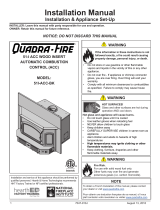 Quadrafire 5100i Wood Insert Installation guide
Quadrafire 5100i Wood Insert Installation guide
-
Quadra-Fire EXPLRMED-PMH Installation guide
-
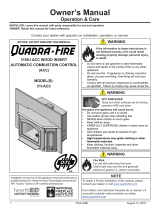 Quadrafire 3100i Wood Insert User manual
Quadrafire 3100i Wood Insert User manual
-
 Quadrafire 2700i Wood Insert Installation guide
Quadrafire 2700i Wood Insert Installation guide
-
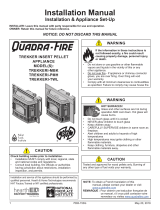 Quadrafire Trekker Series Pellet Insert Installation guide
Quadrafire Trekker Series Pellet Insert Installation guide
-
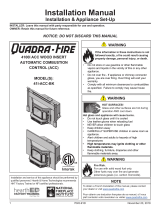 Quadrafire 4100i Wood Insert Installation guide
Quadrafire 4100i Wood Insert Installation guide
-
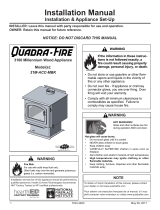 Quadrafire 3100 Millennium ACC Install Manual
Quadrafire 3100 Millennium ACC Install Manual
-
Quadra-Fire 3100 Millennium Installation guide
-
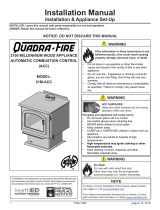 Quadrafire 2100 Millennium Wood Stove Installation guide
Quadrafire 2100 Millennium Wood Stove Installation guide
-
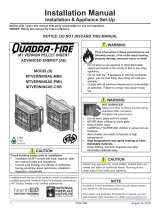 Quadrafire Mt. Vernon AE Pellet Insert Installation guide
Quadrafire Mt. Vernon AE Pellet Insert Installation guide
Other documents
-
Hisense HBM17158SS User guide
-
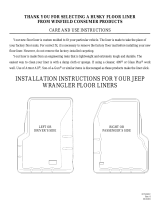 Husky Liners Front Floor Liners Installation guide
Husky Liners Front Floor Liners Installation guide
-
FIELD CONTROLS M Draft Control Installation guide
-
United States Stove GLV1 Owner's manual
-
USSC GLV1 User guide
-
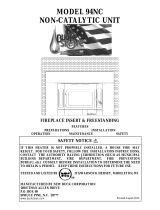 New Buck Corporation 94NC User manual
New Buck Corporation 94NC User manual
-
 New Buck Corporation 94NC User manual
New Buck Corporation 94NC User manual
-
Design House 519579 Installation guide
-
Hearth and Home Technologies 5100-I User manual
-
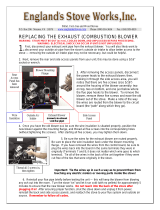 Englander PU-076002B Installation guide
Englander PU-076002B Installation guide







































